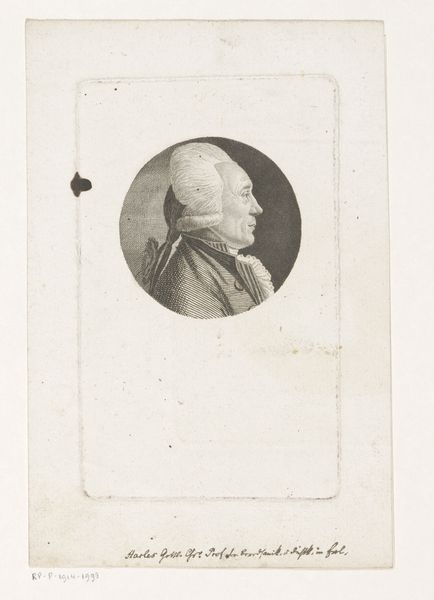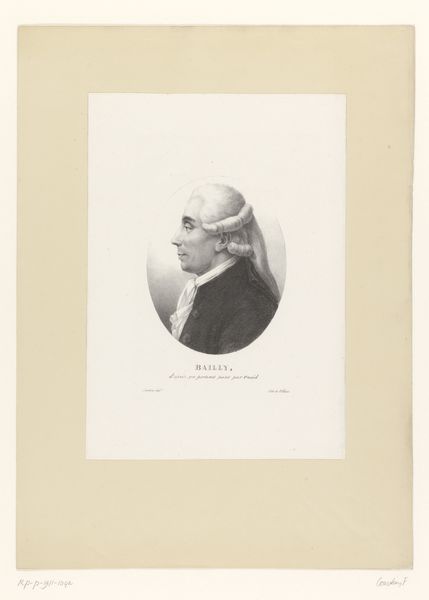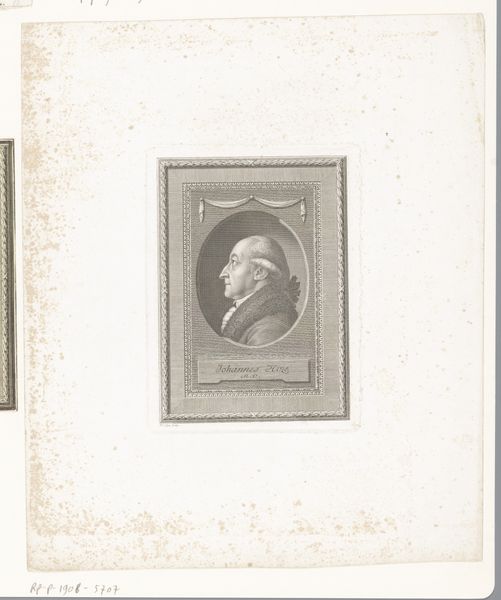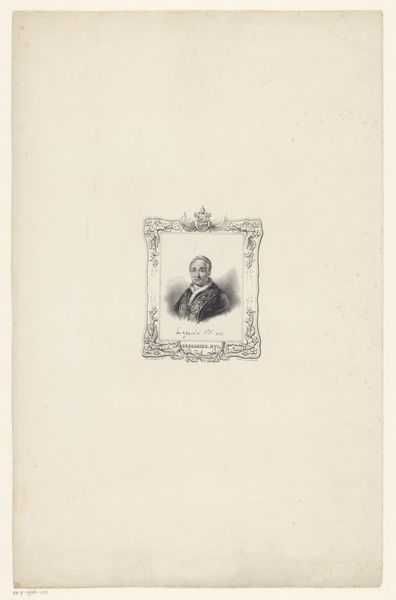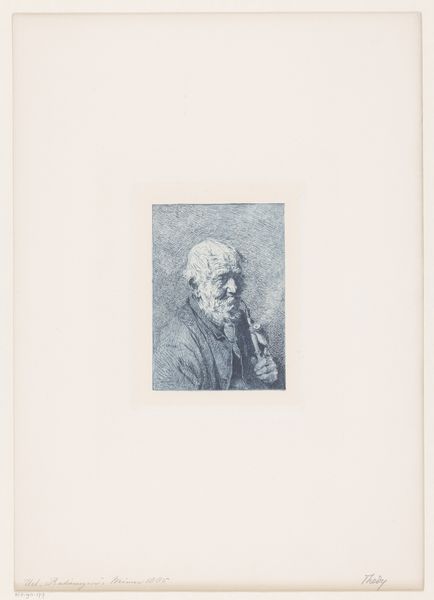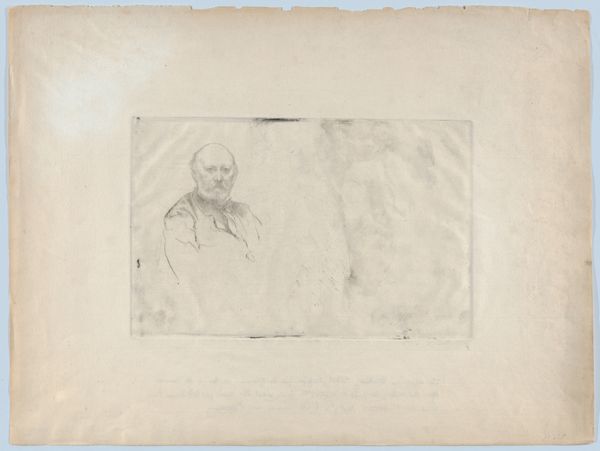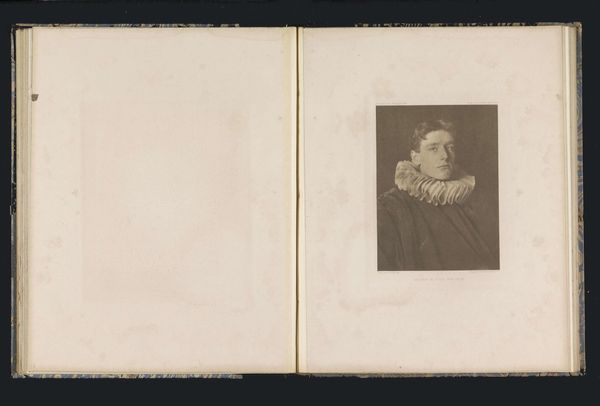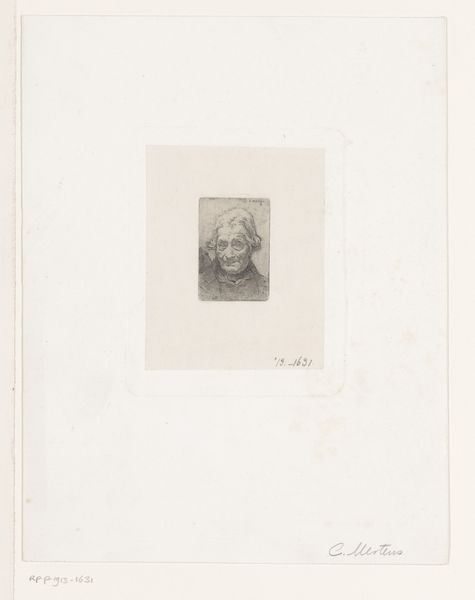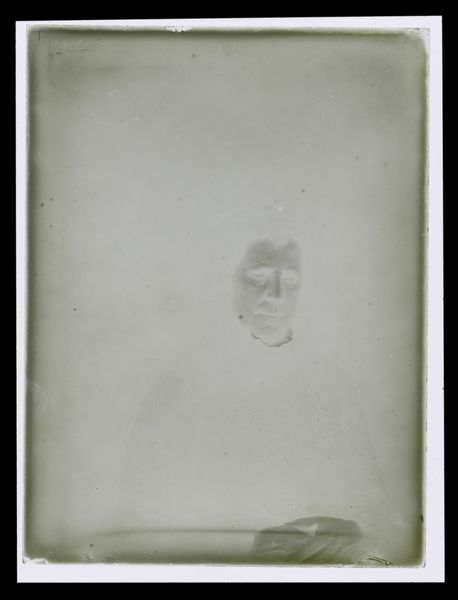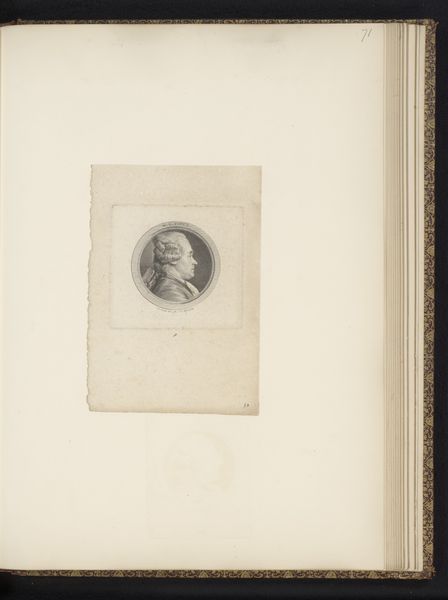
drawing, print, engraving
portrait
pencil drawn
drawing
light pencil work
16_19th-century
pencil sketch
charcoal drawing
figuration
pencil drawing
pencil work
academic-art
engraving
realism
Dimensions: height 76 mm, width 57 mm
Copyright: Rijks Museum: Open Domain
Curator: Looking at this portrait, what springs to mind? Editor: A kind of weary knowing. It's small, almost understated, but those eyes… they've seen things, haven't they? It’s compelling despite its simplicity. Curator: Indeed. This is “Head of a Monk” by Carl Bloch, made around 1880. It’s a print – an engraving, actually – so the detail is quite remarkable for something so readily reproducible. Editor: Engraving… that accounts for the fineness of the lines. There's an intimacy to it, almost as if the artist sketched it in secret. Tell me, what is it about the monastic figure that has captured artists' imaginations for so long? Curator: Perhaps it’s the perceived dichotomy. They represent a withdrawal from worldly concerns, yet their contemplative life, paradoxically, engages them deeply with universal human struggles – faith, doubt, morality… Artists explore this tension. Look at the monk's face – the wrinkles etched deeply suggest a life of contemplation and hardship, possibly even internal conflict. The shaved head, framed by the dark cowl, creates a powerful visual symbol of renunciation. Editor: It also reminds me of similar images from earlier eras, especially the way the face is lit. There’s something almost…archetypal. Like he’s not just *a* monk, but *the* monk – a symbol of religious devotion, a conduit for spiritual yearning. He reflects back at us our own searches for meaning. Curator: Precisely. Consider how Bloch used light and shadow, hatching lines to create depth, giving us a tangible sense of the figure. The print, in a sense, allows access to something usually reserved for the divine, or at least cloistered away. Editor: The way the light catches the bald head, it makes me think of mortality, the skull beneath the skin, you know? I love the fact that from one era to another these types of artistic depictions take on diverse social or art-historical implications while somehow still alluding to enduring symbolic roots. Curator: A beautiful point, so concisely said! It’s a piece that invites close observation, that benefits from being viewed up close like this, really engaging with this individual even so far removed. Editor: Yes, seeing a familiar story through a different medium opens up entirely new dimensions. Thank you, I was starting to lose faith in portraits but that was just what I needed to hear.
Comments
No comments
Be the first to comment and join the conversation on the ultimate creative platform.
